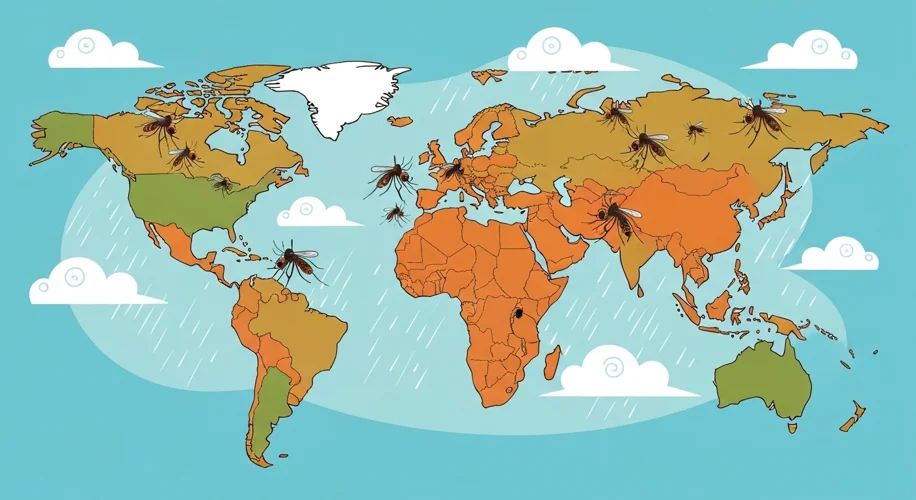Did you know that mosquito-borne diseases like Chikungunya are making a significant comeback, with cases surging worldwide? As an atmospheric scientist, I see a clear connection between these outbreaks and our changing climate.
It might surprise you, but weather patterns play a huge role in where and when mosquito-borne illnesses spread. Mosquitoes, and the viruses they carry, thrive in specific environmental conditions. For years, many regions have been experiencing warmer temperatures and altered rainfall patterns – and these shifts are creating ideal breeding grounds for mosquitoes.
How Climate Change Fuels Mosquito-Borne Diseases
Let’s talk about how this happens. Rising global temperatures, particularly in areas that were once too cool for these specific mosquitoes to survive year-round, are expanding their habitats. Think about it: mosquitoes need warmth to develop and reproduce. When temperatures stay higher for longer periods, their life cycles can accelerate, and they can spread into new territories.
We’re also seeing changes in rainfall. While some areas might face droughts, others are experiencing more intense rainfall events. Both can create more mosquito breeding sites. Puddles, standing water in containers, and even flooded areas become perfect nurseries for mosquito larvae.
This isn’t just a distant problem. Chikungunya, a virus transmitted primarily by Aedes aegypti and Aedes albopictus mosquitoes, causes fever, severe joint pain, muscle pain, headaches, and rash. While not typically fatal, the joint pain can be debilitating and last for months or even years. As these mosquitoes find more hospitable environments, communities that haven’t historically dealt with these diseases are now becoming vulnerable.
The Impact on Public Health
This surge poses a significant challenge to public health systems. It means increased demand for disease surveillance, prevention efforts, and healthcare services. And here’s the crucial part: climate change often exacerbates existing inequalities. Vulnerable communities, which may already have limited access to healthcare and resources, are often disproportionately affected. They might live in areas with more standing water, have housing that offers less protection from mosquitoes, or lack the means to prevent exposure.
What Can We Do?
Understanding the scientific links between climate and disease is the first step. Public health initiatives focusing on mosquito control, such as eliminating standing water around homes and using repellents, remain critical. But on a larger scale, addressing the root cause – climate change – is essential. This means supporting policies and actions that reduce greenhouse gas emissions and build more resilient communities.
It’s a complex issue, but by understanding the science, we can better prepare and protect ourselves and our communities from the growing threat of mosquito-borne diseases.

